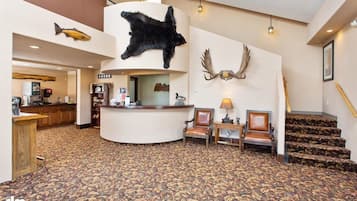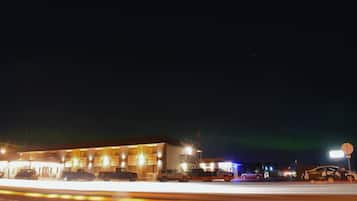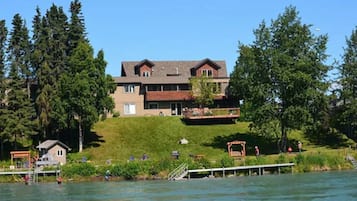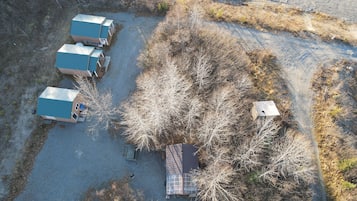Photo by Sharrie Shaw
Hotels in Nikiski
Free cancellation options if plans change
Earn rewards on every night you stay
Save more with Member Prices
Check prices for these dates
Where to stay in Nikiski?

Kenai Airport Hotel
Kenai Airport Hotel
9.2 out of 10, Wonderful, (323)
The price is CNY761
CNY807 total
includes taxes & fees
Nov 27 - Nov 28
Lowest nightly price found within the past 24 hours based on a 1 night stay for 2 adults. Prices and availability subject to change. Additional terms may apply.
Go beyond your typical stay in Nikiski
Apartment
Family friendly
Top landmarks in Nikiski
Learn more about Nikiski
Nikiski is well-known for its attractions such as Island Lake and Kenai National Wildlife Refuge. The city has something for everyone including sights like Cabin Lake and Kotsina Road within a secluded setting.
![The Arctic Circle is one of the five major circles of latitude that mark maps of the Earth. As of 16 February 2015, it runs 66°33′45.6″ north of the Equator.
The region north of this circle is known as the Arctic, and the zone just to the south is called the Northern Temperate Zone. The equivalent polar circle in the Southern Hemisphere is called the Antarctic Circle.
The Arctic Circle is the southernmost latitude in the Northern Hemisphere at which the sun can remain continuously above or below the horizon for 24 hours (at the June solstice and December solstice respectively). North of the Arctic Circle, the sun is above the horizon for 24 continuous hours at least once per year (and therefore visible at midnight) and below the horizon for 24 continuous hours at least once per year (and therefore not visible at noon). On the Arctic Circle those events occur, in principle, exactly once per year, at the June and December solstices, respectively. However, in practice, because of atmospheric refraction and mirages, and because the sun appears as a disk and not a point, part of the midnight sun may be seen on the night of the northern summer solstice up to about 50′ (90 km (56 mi)) south of the Arctic Circle; similarly, on the day of the northern winter solstice, part of the sun may be seen up to about 50′ north of the Arctic Circle. That is true at sea level; those limits increase with elevation above sea level, although in mountainous regions there is often no direct view of the true horizon.
The position of the Arctic Circle is not fixed. It directly depends on the Earth's axial tilt, which fluctuates within a margin of 2° over a 40,000-year period,[2] notably due to tidal forces resulting from the orbit of the Moon. The Arctic Circle is currently drifting northwards at a speed of about 15 m (49 ft) per year; see Circle of latitude for more information.
#snow](https://images.trvl-media.com/place/6140564/a9f9449e-bab4-40a6-a9a1-5356b0cc2aa8.jpg?impolicy=fcrop&w=900&h=675&p=1&q=high)
Photo by Sharrie Shaw
Open Photo by Sharrie Shaw
Check out reviews of Nikiski hotels guests love

Soldotna Inn
10/10 Excellent
Frequently asked questions
Keep exploring
- Landmarks
- Hotels close to nearby airports
- Nearby cities
- Top cities in United States of America
- Most popular destinations
- More ways to book
- New York Hotels
- Las Vegas Hotels
- Orlando Hotels
- Chicago Hotels
- Los Angeles Hotels
- Miami Hotels
- San Francisco Hotels
- San Diego Hotels
- Houston Hotels
- Pigeon Forge Hotels
- Gatlinburg Hotels
- San Antonio Hotels
- Nashville Hotels
- Atlanta Hotels
- Boston Hotels
- Austin Hotels
- Key West Hotels
- Fort Lauderdale Hotels
- Honolulu Hotels
- New Orleans Hotels
Most popular destinations
Hotels
- Hotels in Hong Kong SAR
- Resorts & Hotels with Spas in La Digue
- Park Inn by Radisson Neumarkt
- Hotels in Hawar
- Hotels in Guiry-en-Vexin
- Green Court Residence Jinqiao Diamond Shanghai
- Shenzhen Dreamers Capsule Hotel
- The Corner Duomo Hotel
- La Quinta Inn & Suites by Wyndham Stevens Point
- Mandarina Hotel Luxembourg Strassen
- Best Western PLUS Morristown Inn-Florham Park
- Hyatt Place Deqing
- Hotels near Merville Beach
- Hotels in Lake Tekapo
- Hotels in Shanghai
- Hotels in Shenzhen
- Hotels near Neum Beach
- Hotels in Birstonas
- Hotels in Wells Beach
- Hotels in Arua
- Hotels in Ongata Rongai
- Hotels near Bank of America Stadium
- Hotels in United Kingdom
- Tri Hotel Lajeado
- Hotels in Curaçao
- Ovation Seven-Cultivation Hotel
- Hotels in Xiamen
- Tokyo Disney Celebration Hotel
- Wild Palms, a JdV by Hyatt Hotel
- Hotels in Kuala Lumpur
![The Arctic Circle is one of the five major circles of latitude that mark maps of the Earth. As of 16 February 2015, it runs 66°33′45.6″ north of the Equator.
The region north of this circle is known as the Arctic, and the zone just to the south is called the Northern Temperate Zone. The equivalent polar circle in the Southern Hemisphere is called the Antarctic Circle.
The Arctic Circle is the southernmost latitude in the Northern Hemisphere at which the sun can remain continuously above or below the horizon for 24 hours (at the June solstice and December solstice respectively). North of the Arctic Circle, the sun is above the horizon for 24 continuous hours at least once per year (and therefore visible at midnight) and below the horizon for 24 continuous hours at least once per year (and therefore not visible at noon). On the Arctic Circle those events occur, in principle, exactly once per year, at the June and December solstices, respectively. However, in practice, because of atmospheric refraction and mirages, and because the sun appears as a disk and not a point, part of the midnight sun may be seen on the night of the northern summer solstice up to about 50′ (90 km (56 mi)) south of the Arctic Circle; similarly, on the day of the northern winter solstice, part of the sun may be seen up to about 50′ north of the Arctic Circle. That is true at sea level; those limits increase with elevation above sea level, although in mountainous regions there is often no direct view of the true horizon.
The position of the Arctic Circle is not fixed. It directly depends on the Earth's axial tilt, which fluctuates within a margin of 2° over a 40,000-year period,[2] notably due to tidal forces resulting from the orbit of the Moon. The Arctic Circle is currently drifting northwards at a speed of about 15 m (49 ft) per year; see Circle of latitude for more information.
#snow](https://images.trvl-media.com/place/6140564/a9f9449e-bab4-40a6-a9a1-5356b0cc2aa8.jpg?impolicy=resizecrop&rw=1920&ra=fit&ch=480)


































































